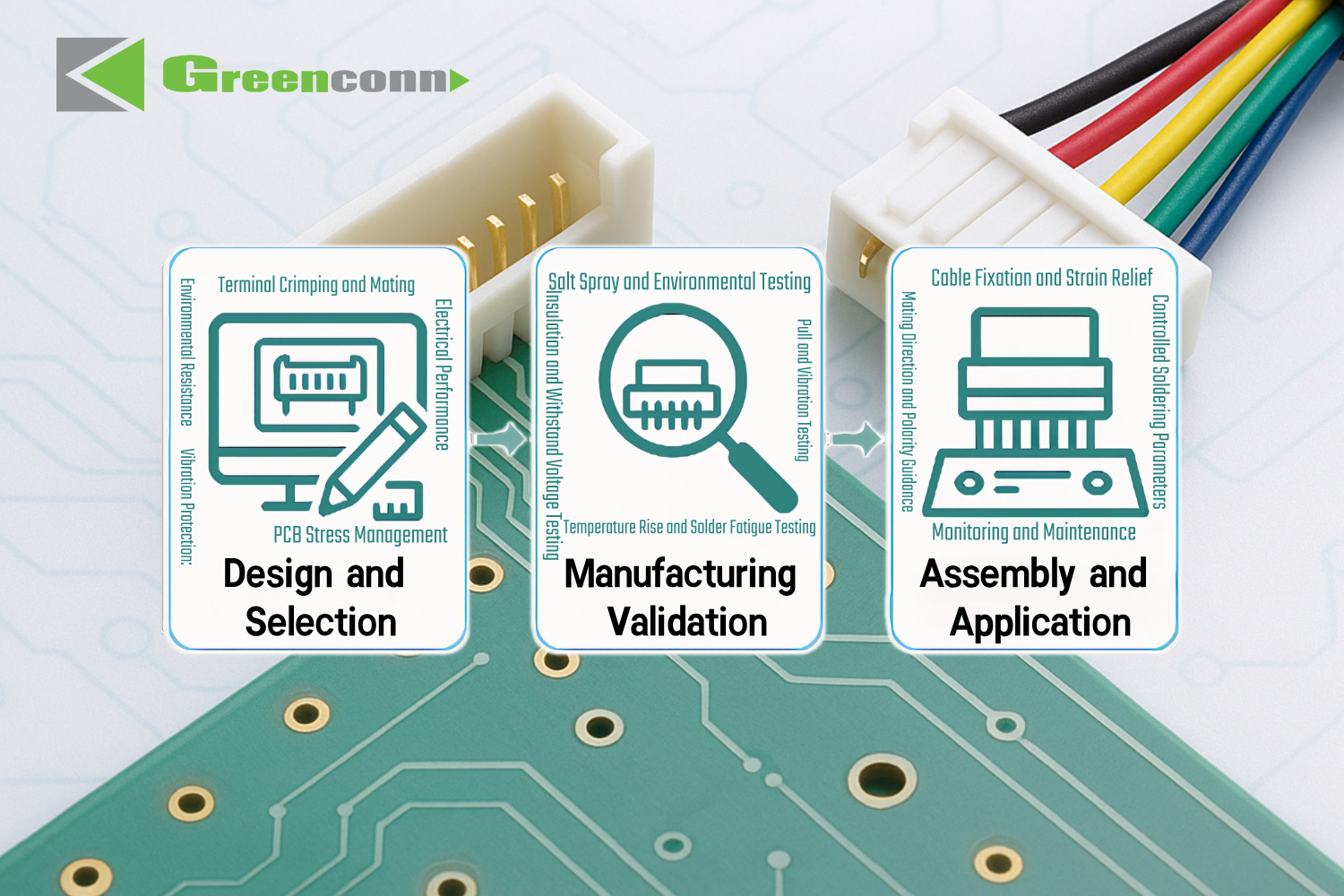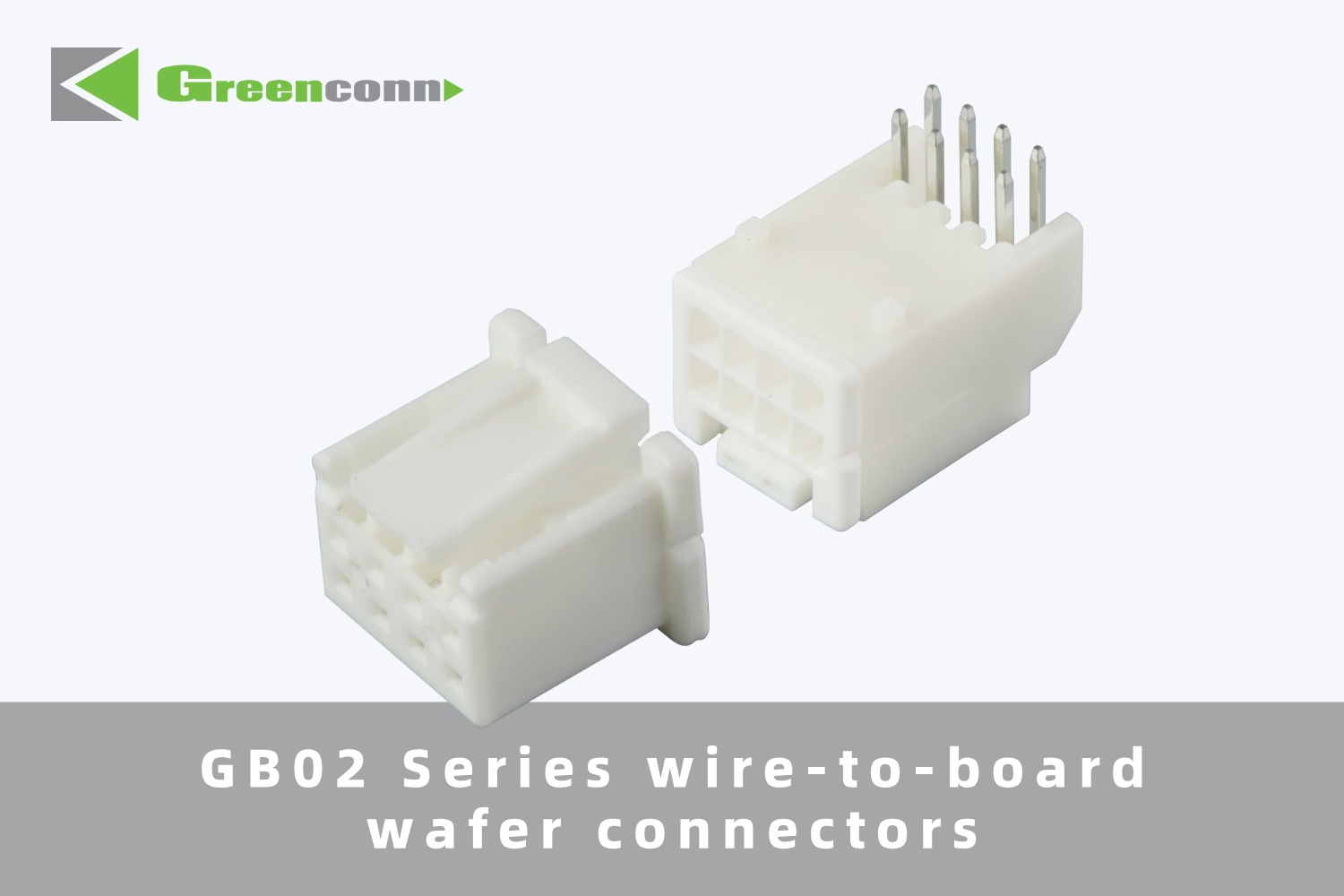Ensuring Wire-to-Board Connector Reliability Through Full-Process Control
As the critical interface between cable harnesses and printed circuit boards (PCBs), wire-to-board connectors play a decisive role in ensuring stable power and signal transmission.
Because they bridge a flexible wire and a rigid PCB, these connectors are often exposed to mechanical stress, vibration, and temperature cycling—making them one of the most failure-prone interfaces in electronic assemblies.
Achieving long-term reliability therefore requires a comprehensive approach spanning design, validation, and assembly.

(Ensuring Greenconn Wire-to-Board Connector Reliability Through Full-Process Control)
1. Design and Selection: Balancing Electrical Performance and Mechanical Stress
Wire-to-board connectors must ensure reliable electrical contact and mechanical stability within limited space. Key considerations during the design phase include:
• Terminal Crimping and Mating: Ensure crimp force and insertion force are properly matched to prevent loosening over time;
• Electrical Performance: Specify rated current, voltage, and contact resistance appropriately to avoid terminal overheating or signal degradation;
• Environmental Resistance: Use materials and structures that withstand moisture, salt spray, and high temperatures;
• Vibration Protection: For applications subject to vibration, consider connectors with locking clips to secure mating and prevent detachment during assembly or operation;
• PCB Stress Management: Incorporate reinforcing legs or positioning posts to prevent solder joint micro-cracks caused by cable stress.
Careful matching of structure and materials at the design stage, along with targeted protection measures, is essential to ensure long-term stability of wire-to-board connections.
2. Manufacturing Validation: Testing Beyond Standards
Rigorous testing ensures that design reliability translates into production quality.
For example, Greenconn’s GB02 Series wire-to-board wafer connectors undergo a complete reliability verification process before shipment, including:
• Salt Spray and Environmental Testing: Verifies corrosion and weather resistance;
• Insulation and Withstand Voltage Testing: ≥1000 MΩ and 800V AC per minute;
• Pull and Vibration Testing: Evaluates retention strength and stability under high acceleration;
• Temperature Rise and Solder Fatigue Testing: Ensures terminal and solder temperatures remain within 30°C at rated current.
Through comprehensive validation, each connector leaving the production line is qualified for long-term, stable operation even under demanding conditions.

(Greenconn GB02 Series wire-to-board wafer connectors)
3. Assembly and Application: Managing Stress and Extending Service Life
During installation and field operation, improper cable routing or mechanical stress can easily lead to solder cracks or intermittent contact. To ensure stable connections:
• Cable Fixation and Strain Relief: Avoid direct stress on solder joints by proper cable securing and routing;
• Mating Direction and Polarity Guidance: Follow orientation and keying features to prevent mismating;
• Controlled Soldering Parameters: Maintain proper soldering temperature and duration to preserve plating integrity;
• Monitoring and Maintenance: Establish benchmarks for contact resistance and temperature rise to detect degradation early.
A standardized assembly process not only improves immediate reliability but also extends the overall service life of the system.
4. System-Level Reliability: Engineering-Grade Quality from Design to Delivery
Greenconn applies strict engineering and quality standards across every development stage—from R&D and validation to automated production.
Beyond standard product offerings, we also provide customized wire-to-board solutions with tailored pin configurations, dimensions, and electrical parameters.
By integrating full-process reliability management, Greenconn ensures every connector delivers stable, durable, and consistent performance for customers’ long-term applications.



